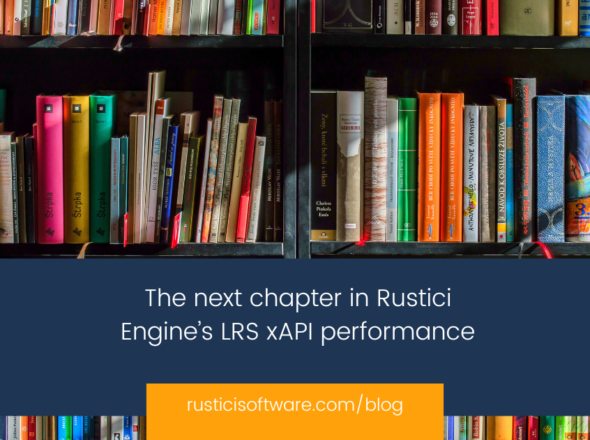There’s a new release of Rustici Engine available now, and we’re calling it 20.1. Long-time Rustici Software partners might ask “Don’t you mean 2020.1?” Nope. With this release, we’ve decided to start using a more typical naming convention for our product versions, and 20 seemed like a nice round number to start with. It’s also pretty close to the actual number of Engine releases that we’ve done since 2005.1 came out 15 years ago. Our hope is that the new convention will make it easier to judge how much has changed between releases, just by comparing the numbers. So what’s new in Rustici Engine 20.1?
LTI support
The new feature that I’m most excited about in Engine 20.1 is the ability to import and deliver LTI 1.1 and 1.3 tools. We’ve actually supported LTI for quite a while in some of our other products, but only as a way to share content with other systems. Starting now with Engine 20.1, you can bring LTI tools into your LMS, giving your learners access to new libraries of content and applications from a number of vendors.
YouTube
Speaking of libraries of content, YouTube has what is almost certainly the largest collection of videos to ever exist, and it continues to grow by the minute. Maybe you’ve found a great video that explains pivot tables (and synthpop) in Excel, or how to play that one guitar riff the right way, and you want to share it with your learners. With Rustici Engine 20.1, you can import a YouTube video by its URL, and deliver it to learners with the same results tracking that we provide with our native MP4 video support.
Subtitles and closed captions
Engine’s native MP4 video support has also gained a new feature in 20.1: the ability to display subtitles or closed captions for accessibility. Using the new course assets API resource, you can upload WebVTT files in one or more languages for your videos, and your learners will be able to enable captions for their preferred language.
On-demand xAPI registrations
Not all learning happens inside an LMS. One of the primary strengths of xAPI is that it can be used to capture those experiences and record them in a learning record store (LRS) like the one built into Engine. A drawback to that approach is that you lose the convenience of Engine’s registration-based, standards-agnostic API for accessing results data. But now with Engine 20.1, you can create new registrations on-demand based on incoming xAPI statements, or map those statements to existing registrations.
With this release, we’re continuing to evolve Engine to help our customers do more with their learning platforms than ever before. We think our customers, old and new, will find a ton of value in the ability to bring expansive new content sources like YouTube into their platforms, interact with the higher education learning space, and track learners’ experiences with xAPI using the Rustici Engine. These features make it easier than ever to go to market quickly with a competitive learning platform.


